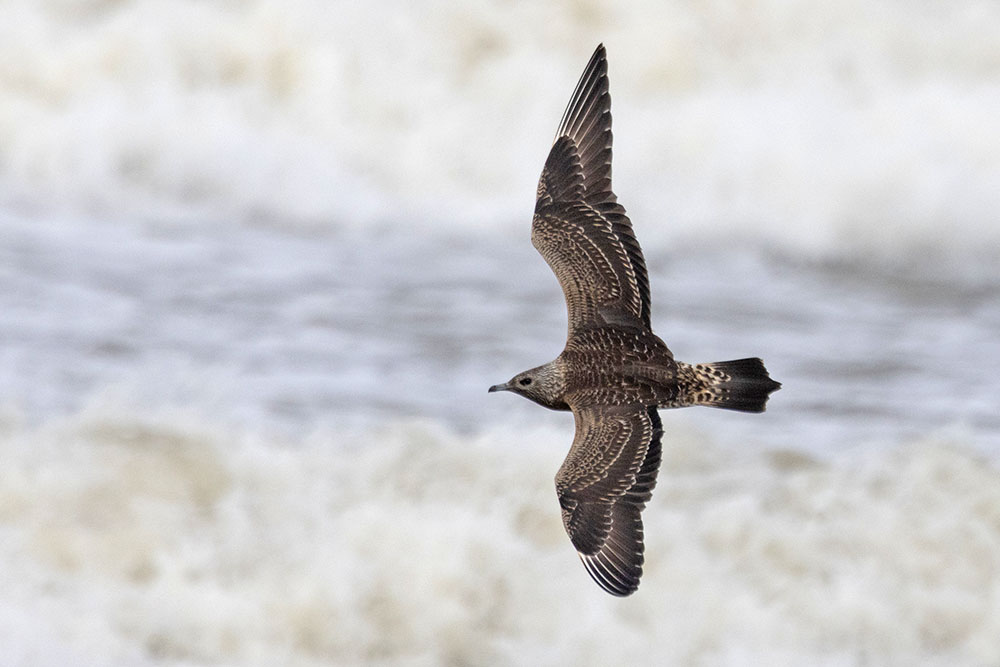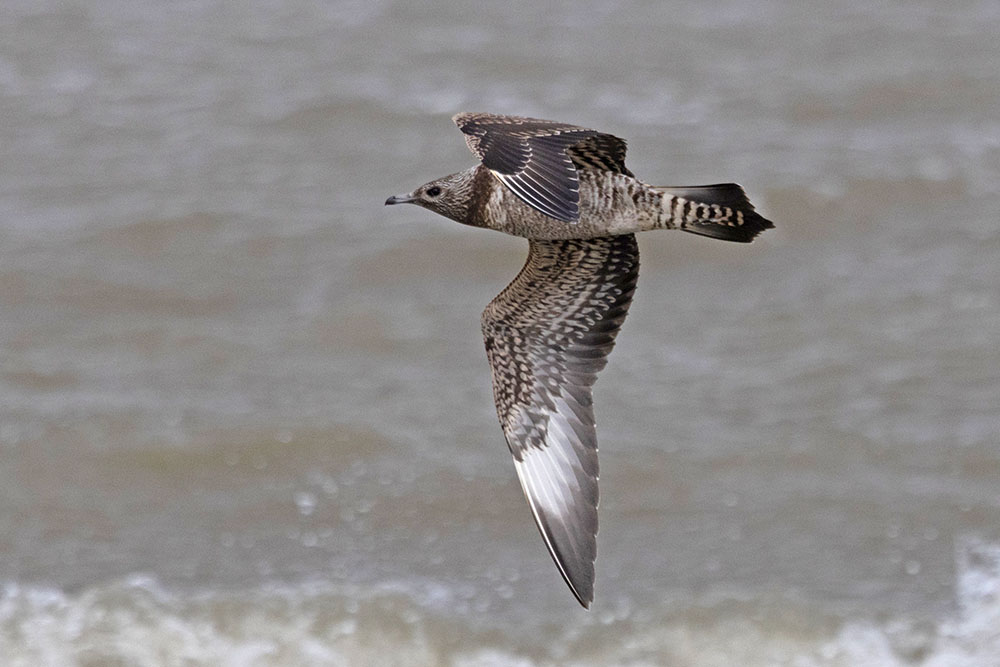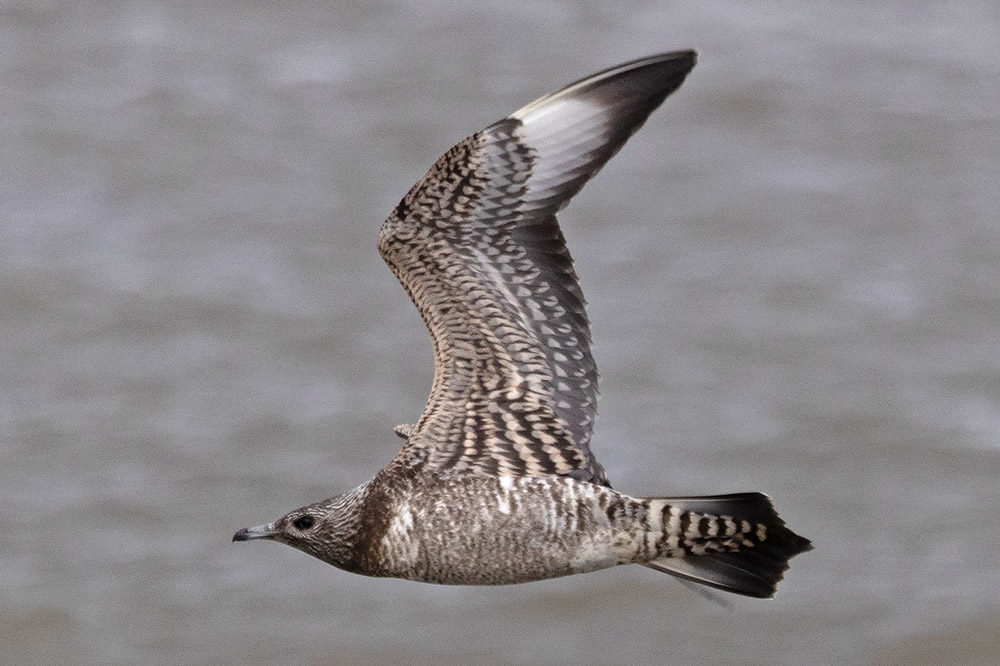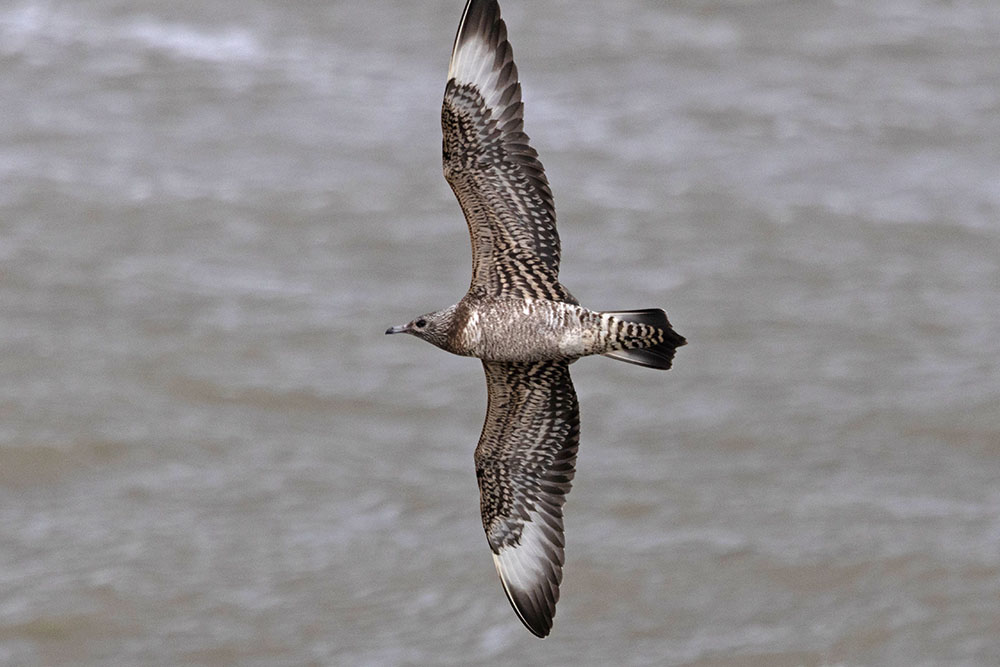![]()
![]()
A juvenile skua
Identification of younger skuas has not been any more straightforward in Estonia this autumn than before. In 2023 there has been unusually many Long-tailed seen but only a few Pomarines. Also many Arctics but not so many juveniles have been observed.
A difficult individual is presented here. Any comments are welcome.
This individual was seen and photographed on 7th October 2023 at Põõsaspea. The bird was seen very briefly in strong wind, but close up. It looked small and delicate, and we initially thought it was a Long-tailed Skua, but now we are not totally convinced, as it shows some contradictory features.
It is quite a pale individual, paler than most individuals of both species. Artic Skuas this pale should be more rufous both on coverts and head, and the bars on both uppertail and undertail coverts should not be this contrasting and regular. The dark band on the upper breast contrasts to a whitish band below it and a widely greyish belly creating a Long-tailed Skua type of pattern. The head is distinctly streaked, like most Arctic, but this occurs in paler Long-taileds too.
The white patch on the underwing is very extensive for a Long-tailed, but some other photographed individuals come close. The tips of the primaries have a double pattern of light drop-shaped markings. This is a more pro-Arctic feature, but may be explained by the pale overall plumage of the bird, although I am still to see this kind of pattern in photos of Long-tailed Skua.
The white shafts to the uppersides of the primaries are more contrasting on three outermost primaries, and become darker inwards, but with the fourth and fifth still showing paler shafts. This pattern may not be conclusive, although pale Arctic typically show more white shafts, and typical Long-tailed less. There is no pale area to the bases of primaries outside the primary coverts, which most Arctic Skuas this pale will show - this points to Long-tailed Skua.
The central rectrices have shortish, somewhat pointed projections. The easiest individuals of both species have longer projections, with rounded feather tips in Long-tailed and pointed in Arctic. It may be that the tail feathers of this bird fit both species, but the tips are worryingly pointed for a Long-tailed.
The bill looks somewhat longish, and the black tip is only about one third of the length, which is more typical of Arctic Skua, although the extremes are again very close to each other.
What about the overall jizz and shape of the bird in the photos? Again difficult - it is not the easiest Long-tailed, which should show a slightly narrower rear end and rounder head, but this bird is still quite sleek and narrow - winged.
Update:
Several people have commented on the photos for which we are grateful. A majority favours Arctic Skua. The identification is mostly about which of the aforementioned features are more important than the others. Bill length and shape surely are important, and these point to Arctic. The central rectrices also point to Arctic, although this is less unequivocal. The buff tips to the primaries really are broader than are known to occur in Long-tailed. It was also pointed out that the general greyish buff colour does not exclude Arctic, and some with such distinct undertail coverts barring will occur, although less commonly.



